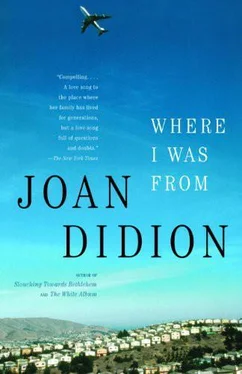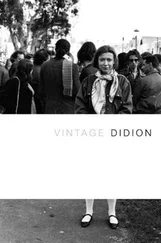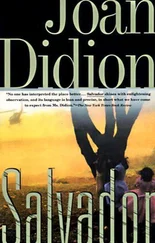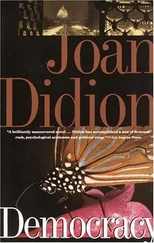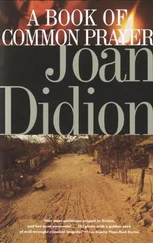Incarceration was not always a growth industry in California. In 1852 there was only San Quentin, by 1880 there was also Folsom. During the 104 years that followed, a century during which the population of California increased from 865,000 to 25,795,000 people, the state found need for only ten additional facilities, most of them low or medium security. It was only in 1984, four years after Don Novey took over the union, that the new max and supermax prisons began rolling online, Solano in 1984, “New Folsom” (a quarter mile removed from “Old Folsom”) in 1986, Avenal and lone and Stockton and San Diego in 1987, Corcoran and Blythe in 1988, Pelican Bay in 1989, Chowchilla in 1990, Wasco in 1991, Calipa-tria in 1992, Lancaster and Imperial and Centinela and Delano in 1993, Coalinga and a second prison at Blythe in 1994, second prisons at both Susanville and Chowchilla in 1995, Soledad in 1996, a second prison at Corcoran in 1997.
Delano, the town in the San Joaquin between Tulare and Bakersfield that became synonymous outside California with Cesar Chavez’s farmworkers’ union, still yearns for its own second prison, “New Delano,” to be built just across the road from what is already called “Old Delano,” the ten-year-old North Kern State Prison. Men-dota, west of Fresno and south of Chowchilla, still waits for what was to have been its privately built and operated prison, on which construction was begun and then postponed by the Nashville-based Corrections Corporation of America, which had hit a snag trying to contract with the state for prisoners to fill the $100 million maximum-security prison it had already built in the Mojave desert. “They can build whatever prisons they want,” Don Novey had said to this point. “But the hell if they’re going to run them.”
That these prisons should remain the objects of abject civic desire is curious, since they have not actually enriched the towns that got them. A new prison creates jobs, but few of those jobs go to local hires. The Department of Corrections allows that it imports half the “corrections workers” in any new prison, but “tries” to hire the rest from the community. Opponents to “New Delano” point out that only seven to nine percent of the jobs at these new prisons have typically been local hires, and that the local hires get the low-paid service jobs. Of the 1,600 projected jobs at “New Delano,” only 72 would be local hires. There are, moreover, costs, both economic and social: when the families of inmates move into a prison town, they not only strain the limited resources of local schools and social service agencies but bring emotionally stressed children into the community and school system. “The students are all very high risk,” a school official in Lassen County, where Susanville is located, told The Los Angeles Times. “They come from single-parent homes. They’re latchkey kids, often on AFDC. It’s very obvious they’re from a whole different area. It creates societal conflicts. The child does not fit in.”
It was 1993 when the California Department of Corrections activated its first “death fence,” at Calipatria. It was 1994 when the second “death fence” was activated, at Lancaster, carrying a charge of 650 milliamperes, almost ten times the voltage required to cause instant death. “What the fence does is take out the human-error part,” the warden at Lancaster was quoted as having said, explaining that the million-dollar fences would save money in the long run because armed officers could be removed from prison gun towers. “The fence never goes to sleep. It doesn’t go to the bathroom. It doesn’t do any of those things. It’s always working.” It was also 1994 when standardized testing of reading skills among California fourth-graders placed them last in the nation, below Mississippi, tied only with Louisiana. It was 1995 when, for the first time, California spent more on its prisons than on its two university systems, the ten campuses of the University of California and the twenty-four campuses of California State University.
Through most of my life I would have interpreted the growth of the prison system and the diminution of the commitment to public education as evidence of how California had “changed.” Only recently did I come to see them as the opposite, evidence of how California had “not changed,” and to understand “change” itself as one of the cultures most enduring misunderstandings about itself.
“The American community in early California fairly represented, as we shall see, the average national culture and character. But no other part of our land was ever so rapidly peopled as was California in the first golden days. Nowhere else were we Americans more affected than here, in our lives and conduct, by the feeling that we stood in the position of conquerors in a new land. Nowhere else, again, were we ever before so long forced by circumstance to live at the mercy of a very wayward chance, and to give to even our most legitimate business a dangerously speculative character. Nowhere else were we driven so hastily to improvise a government for a large body of strangers; and nowhere else did fortune so nearly deprive us for a little time of our natural devotion to the duties of citizenship. We Americans therefore showed, in early California, new failings and new strength. We exhibited a novel degree of carelessness and overhastiness, an extravagant trust in luck, a previously unknown blindness to our social duties, and an indifference to the rights of foreigners, whereof we cannot be proud. But we also showed our best national traits — traits that went far to atone for our faults. As a body, our pioneer community in California was persistently cheerful, energetic, courageous, and teachable. In a few years it had repented of its graver faults, it had endured with charming good humor their severest penalties, and it was ready to begin with fresh devotion the work whose true importance it had now at length learned — the work of building a well-organized, permanent, and progressive State on the Pacific Coast. In this work it has been engaged ever since.”
— Josiah Royce, California: A Study of American Character, 1886
JUST east of Sacramento, off Kilgore Road in what is now Rancho Cordova, a town with a population of almost fifty thousand that exists only because Aerojet General began manufacturing rockets there after World War Two, there is a three-acre family graveyard, the Matthew Kilgore Cemetery, its gates long gone, its two-hundred-some graves overgrown and many of its stone markers, a few of which are dated as recently as the 1970s, overturned. Two of my great-great-great-grandparents, Matthew Kilgore and his wife Massa McGuire Kilgore, were buried there, Massa Kilgore in 1876, Matthew Kilgore in 1882. When I was in high school and college and later I would sometimes drive out there, park the car and sit on the fender and read, but after the day I noticed, as I was turning off the ignition, a rattlesnake slide from a broken stone into the dry grass, I never again got out of the car.
In the 1980s, when the condition of the Kilgore Cemetery had become a matter of local concern (vandals had dug up a body and stolen its head), the president of the Rancho Cordova Chamber of Commerce appealed to “Cordovans” (residents of Rancho Cordova, in other words “new people”) to join a volunteer effort to clean up the beer bottles and debris left by trespassers. “There are a lot of residents who would like to see this historic site preserved as it deserves to be,” he was quoted as having said in the newspaper story my mother clipped and sent to me in Los Angeles.
I asked, when my mother and I next spoke, if the family — the seventy-some of my father’s cousins who annually attended the Kilgore Family Reunion in McKinley Park in East Sacramento, say — was joining the effort to clean up the Kilgore Cemetery.
Читать дальше
Конец ознакомительного отрывка
Купить книгу
